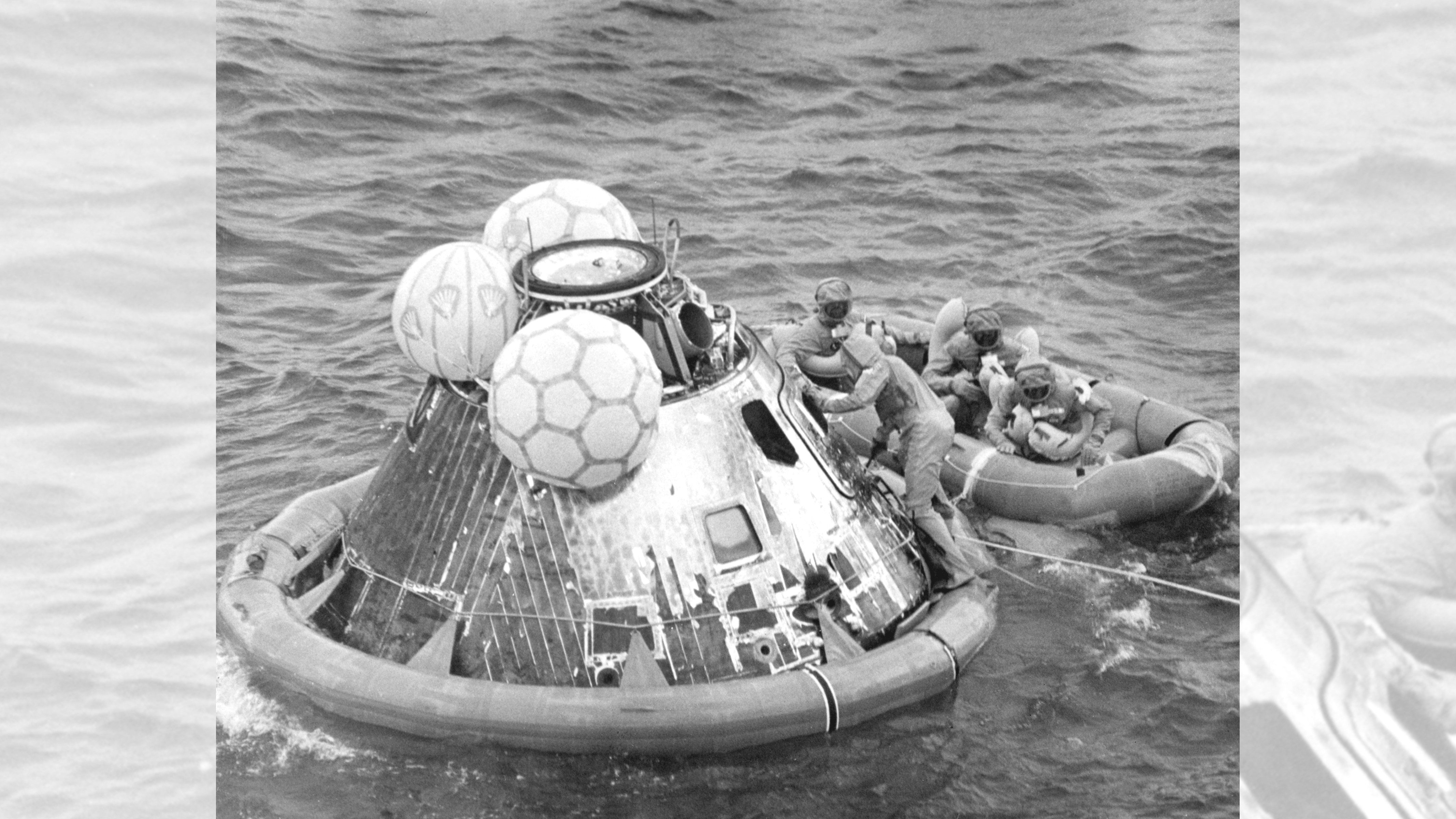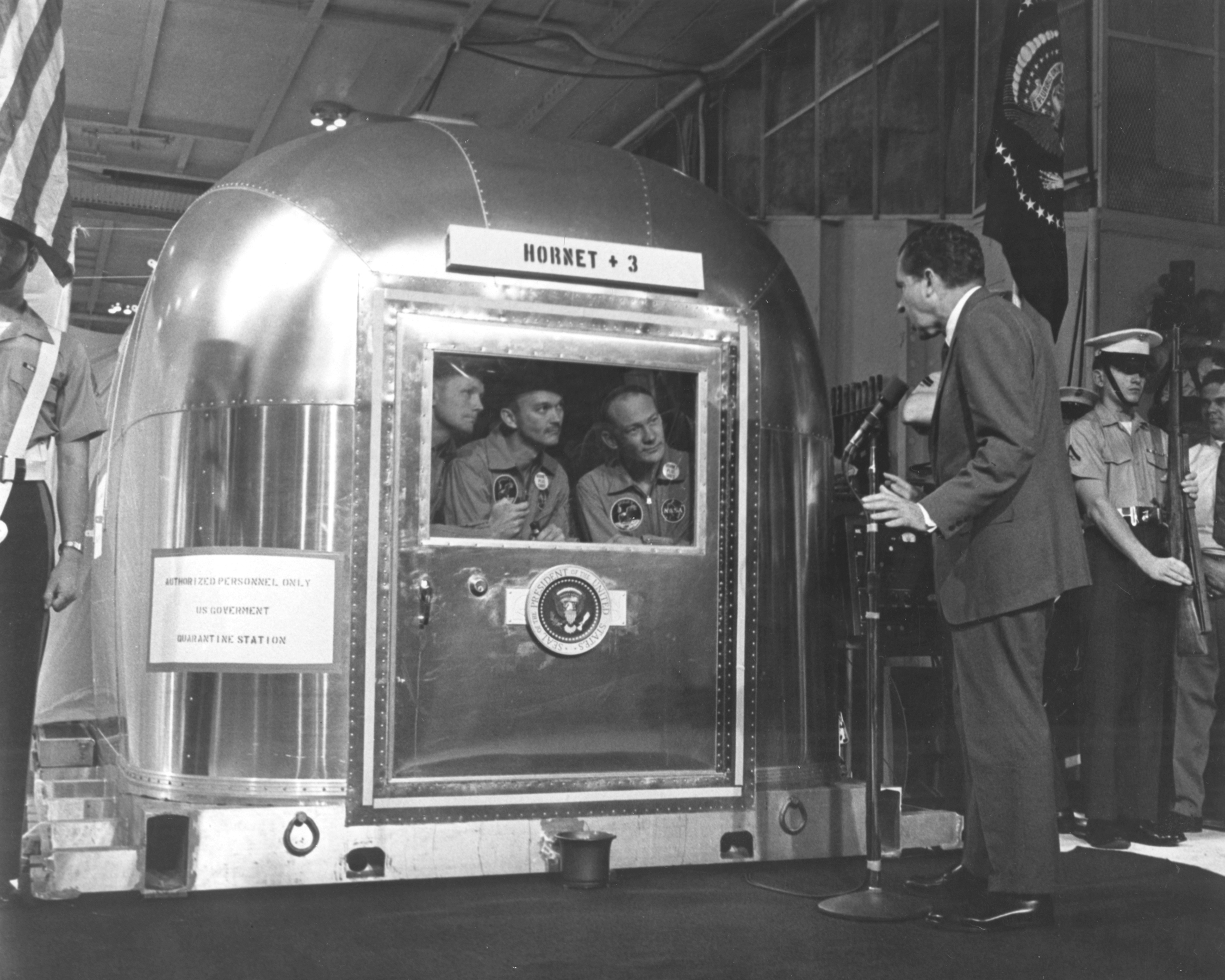
In a small desert town, dozens of unsuspecting people suddenly drop dead from a mysterious plague. The infectious agent has come from outer space; it has no known cure, and the U.S. government must scramble to contain it before it destroys the world.
This is the plot of "The Andromeda Strain," a 1969 novel by author Michael Crichton. The book was published just two months before humans first set foot on the moon, and it sparked widespread panic about what the Apollo 11 astronauts might bring back. Luckily, NASA had a quarantine protocol in place for the mission. But those measures might have been largely for show, according to new research published in the science history journal Isis.
When astronauts first returned from the moon in 1969, NASA officials were concerned that they might carry some weird space microbes back to Earth with them. At the time, neither the US nor USSR had successfully returned a probe from the moon — let alone one with soil samples and actual humans aboard. As a result, nobody knew for sure whether or not the moon harbored microscopic life.
Related: Life may already exist on the moon — and NASA's next mission could find it
NASA set up a quarantine facility in Houston known as the Lunar Receiving Laboratory in order to counteract the possibility of any hitchhiking alien germs escaping onto Earth. When the Apollo 11 crew returned from their mission, they were immediately ushered into this state-of-the-art, multimillion dollar facility, where they spent three weeks. Twenty-four NASA employees who were exposed to lunar material as they helped the astronauts disembark were quarantined as well, the New York Times reported.
On its face, the quarantine protocol looked sensible. But the new research suggests that despite the money and resources invested in it, NASA's "planetary protection" efforts were largely for show. "The quarantine protocol looked like a success only because it was not needed," study author Dagomar Degroot, a historian at Georgetown University, wrote in the new paper.

What's more, Degroot's work shows that NASA knew that its quarantine protocol was probably inadequate. For example, the Apollo spacecraft hadn't been designed to prevent potential lunar contaminants from being exposed to Earth's environment; once it splashed down in the Pacific Ocean, the capsule's cabin had to be fully opened in order to let astronauts Neil Armstrong, Buzz Aldrin and Michael Collins out. The air inside the module was also vented into Earth's atmosphere as the craft reentered, ensuring that the crew wouldn't suffer carbon dioxide poisoning.
But NASA also knew that the risk of the Apollo 11 astronauts bringing home a space plague was extremely low. They played up their ability to contain a microbial threat so as not to panic the public. In a statement at the time, the agency reassured concerned citizens that their efforts "have resulted in a laboratory with capabilities which have never previously existed."
If Apollo 11 had brought back lunar microbes, it's difficult to say whether or not they would have posed any risk to humans. The vast majority of microbial life on Earth is completely harmless to people, and some species are even vital to our health. And since any hypothetical moon germs would have evolved separately from life on Earth for a very long time, they might not even have the ability to interact with our cells.
Ultimately, the probable failure of Apollo 11's quarantine protocol could be a valuable lesson for future missions, which aim to return samples (and humans) from Mars and beyond. Given its atmosphere and geochemistry, Mars is far more likely to harbor microbial life than the moon.
In 2020, NASA issued an updated procedure for containing alien microbes, though the document hasn't been used yet. But even with these standards in place, it may prove impossible to fully contain a runaway space microorganism. We'll just have to hope that they come in peace…or are vulnerable to Lysol.







